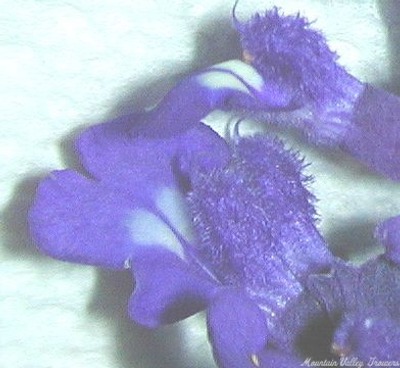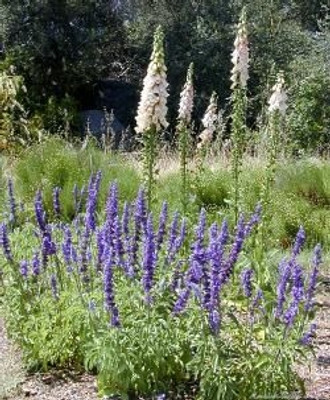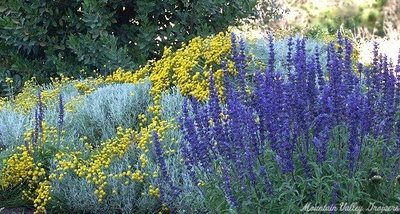Growing & using Victoria Sage
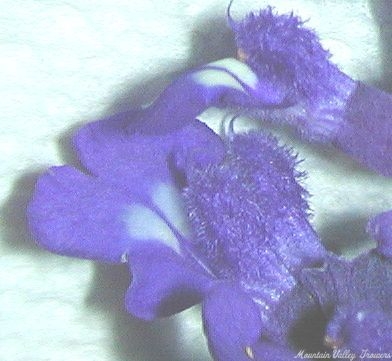
Victoria Sage is small plant that is big on color. Drying the flowers produces a dark lavender color. Perfect as a front of the border or edging plant, Victoria Sage can be grown as an annual in Zones 7 and under.
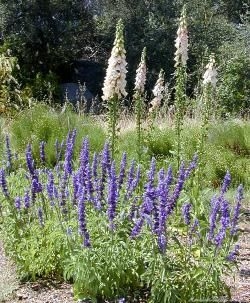
Victoria Sage is in its second spring and is a perfect complement to the tall Foxgloves.
Victoria Sage is small plant that is big on color. Drying the flowers produces a dark lavender color. Perfect as a front of the border or edging plant, Victoria Sage can be grown as an annual in Zones 7 and under.
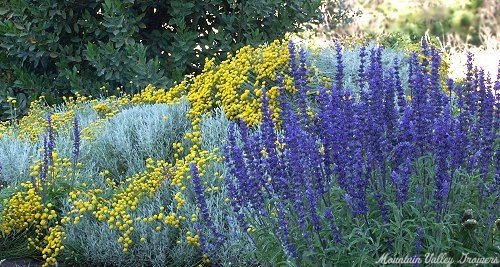
This is the same patch a year later. The photo was taken from a slightly different angle and captures how perfectly the blooming Gray Santolina is with it. The shrubby dark green bush in the back ground is Greek Bay. Overall it is a very Mediterranean look.
You might try Veronica.

